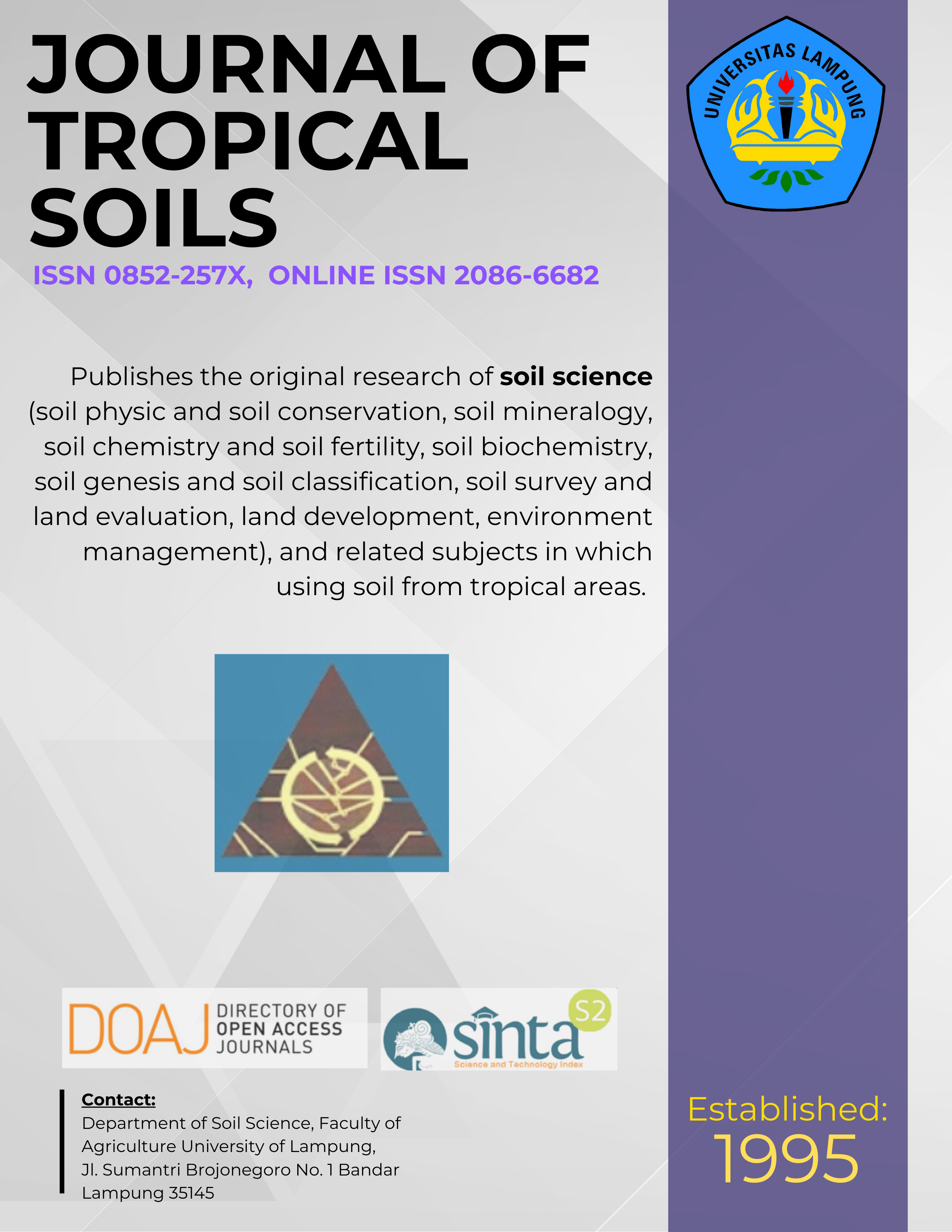Utilization of Coal Bottom Ash and Cattle Manure as Soil Ameliorant on Acid Soil and Its Effect on Heavy Metal Content in Mustard (Brassica juncea)
Main Article Content
Abstract
Coal bottom ash and cattle manure can be used as soil ameliorant. The application of coal bottom ash and cattle manure can improve the soil chemical properties, such as pH and the amounts of available nutrients in soil. The objective of the study was to understand the effect of coal bottom ash and cow manure application on soil chemical properties and heavy metal contents in soil and mustard (Brassica juncea). A pot experiment was conducted in a greenhouse, including three treatment factors, i.e. age of coal bottom ash (fresh, 4 months and 2 years), dose of coal bottom ash, i.e. 0, 40 and 80 Mg ha-1, and dose of cattle manure, i.e. 0 and 10 Mg ha-1. The results show that the application of coal bottom ash and cattle manure increased the pH and the amounts of total-N, available-P and exchangeable cations (K, Ca and Mg) of the soil. The application of coal bottom ash increased the amounts of Pb, Cd and Co in the soil, but did not increase the amounts of Pb and Co in mustard, while the application of cattle manure increased the amount of Cd both in soil and mustard.Â
Â
Keywords: Coal bottom ash, cattle manure, heavy metal, mustard, soil ameliorant
Downloads
Article Details
Issue
Section
License for Authors
Authors who publish with this journal agree to the following terms:
- Authors retain copyright and grant the journal right of first publication with the work simultaneously licensed under a Creative Commons Attribution License that allows others to share the work with an acknowledgement of the work's authorship and initial publication in this journal.
- Authors are able to enter into separate, additional contractual arrangements for the non-exclusive distribution of the journal's published version of the work (e.g., post it to an institutional repository or publish it in a book), with an acknowledgement of its initial publication in this journal.
- Authors are permitted and encouraged to post their work online (e.g., in institutional repositories or on their website) prior to and during the submission process, as it can lead to productive exchanges, as well as earlier and greater citation of published work (See The Effect of Open Access).
License for Regular Users
Other regular users who want to cite, distribute, remix, tweak, and build upon author’s works, even for commercial purposes, should acknowledge the work’s authorship and initial publication in this journal, licensed under a Creative Commons Attribution License.

